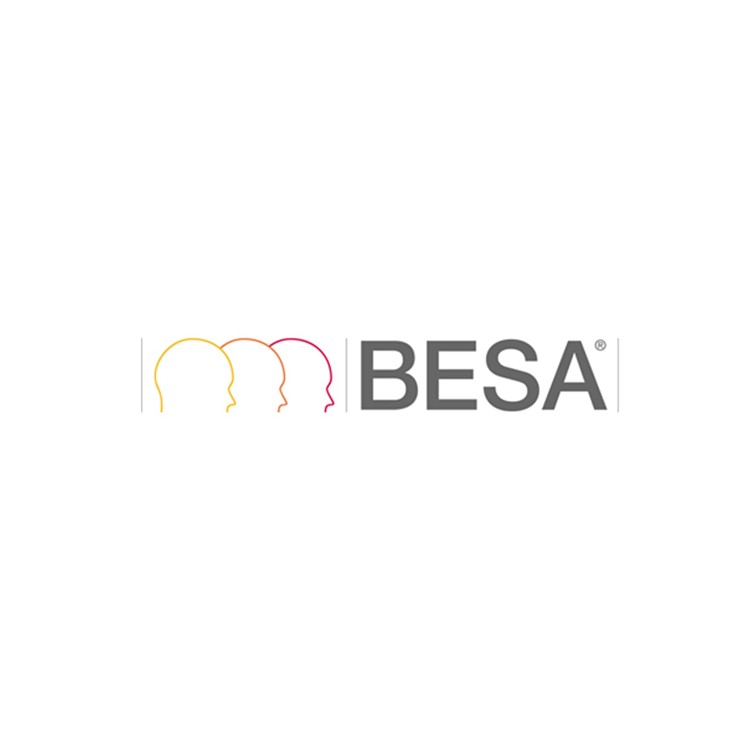BESA Research 腦磁波訊號來源分析軟體

- BESA Research 腦磁波訊號來源分析軟體
-
類別研究分析軟體
-
介紹BESA是用於EEG和MEG研究中最廣泛使用的訊號分析和偶極定位軟體。且BESA是一個高度通用和用戶友好的Windows®程式,具有多項優化的工具,用於預先處理原始或平均數據,以作訊號分析和連接分析。訊號分析的所有重要層面都顯示在一個窗口中,以便立即選擇各種工具。
BESA Research 7.1 Brainwave Signal Source Analysis Software
BESA Research 7.1 is a feature release with many innovative new features, improvements, and bugfixes. This version is fully integrated with the recently released BESA MRI 3.0, for creation and use of individual head models, and visualization of solutions. EEG and MEG can now be modeled simultaneously, and result review was made much more intuitive, revealing new insights in your data in the trademark interactive fashion of BESA Research.
The main highlights of this release are:
Data review and pre-processing:
Atlas-based source montages: Pre-computed atlas-based source montages are now available from the menu entry Montage/Source/Atlas montages as well as under the Src button in the control ribbon.
Parallel computing is used for speed-up of many time-consuming tasks.
Smoother and faster plotting of waveforms eases review of high-density M/EEG data.
New data readers for XDF and Neuroscan CURRY 8 formats are available.
Source analysis:
Boundary element model (BEM) integration: Boundary element head models for individual subjects computed in BESA MRI version 3.0 or higher are automatically loaded in the Source Analysis module, for EEG and / or MEG. They can be selected from the model selection dropdown. Finite element models (FEMs) and BEMs for a subject can be loaded at the same time, so that it is possible to toggle between FEM and BEM model type and compare results.
Combined MEG-EEG source modelling: Combining MEG and EEG for source imaging is now possible. Discrete source fitting as well as all distributed source imaging methods can use the combined model. Simply use the EEG / MEG / MEEG toggle button to switch between the modalities. In case of MEG data with combined magnetometers and gradiometers, you can also toggle whether one or both MEG channel types are combined with the EEG.
MRI display in multi-slice view: The subject’s MRI with overlay of source images, dipole solutions, atlases, can now be shown in multi-slice view. A highly interactive control set allows to adjust settings on the fly for optimum viewing. Navigation through the MRI was also made easier.
Use of noise covariance data from individual trials: The full noise covariance matrix from individual trials can now be used in computation of minimum norm estimates.
The Bayesian source imaging method SESAME was improved to enhance robustness, as well as speed of computation and convergence. For this purpose, hyper-priors were introduced (cf. https://arxiv.org/abs/2006.04141) and parallel computing was optimized for this method.
Confidence limit calculation and display: For dipole solutions and oriented regional sources, confidence limits are now calculated, displayed, and stored.
Calculation of beamformer virtual sensor montages based on atlas regions is now supported.
Two new brain atlases were added: Yeo7 and Yeo17.
Montreal Neurological Institute (MNI) coordinates can now be used in the Source Analysis window.
The baseline interval definition now features an automatic alert if it interferes with signal of interest.
Ready-made color schemes for publication purposes are now available.
Use MEG source montages in BESA Research to save time and facilitate MEG data review. Search for spikes and perform source analysis in MEG.

系統需求
操作系統BESA Research 7.1 is a stand-alone SW product compatible
with personal computers running under the following
hardware /OS:
Operating system:
• Windows® 10 64bit, Touch not supported
• Windows® 7 64bit, Touch not supported
• CPU minimum 2 GHz
• RAM minimum 8 GB
• Display resolution minimum 1280 × 1024 pixels
• Graphics card OpenGL 2.0 with 16 MB RAM or more
Use in Combination With Other Products 1)
BESA Research 7.1 is designed to be used for the following
hardware/software:
• Matlab Version: any major release between 2006a and 2019b
• BESA MRI 2.0
• BESA MRI 3.0
• BESA Connectivity 1.0

BESA Research 7.1 腦磁波訊號來源分析軟體
BESA Research 7.1是一個功能版本,包含了許多創新的新功能、改進和錯誤修正。該版本與最近發布的BESA MRI 3.0完全集成,用於創建和使用單個頭部模型,並實現解決方案的可視化。現在可以同時對EEG和MEG進行建模,結果審查也變得更加直觀,以BESA Research標誌性的交互式方式揭示您數據中的新見解。
這個版本的主要亮點是數據審查和預處理。
基於地圖集的源蒙太奇:現在可以通過菜單入口蒙太奇/源/地圖集蒙太奇以及控制功能區中的Src按鈕進行預計算。並行計算用於加速許多耗時的任務。
波形的繪製更加平滑和快速,便於查看高密度的M/EEG數據。
新的XDF和Neuroscan CURRY 8格式的數據閱讀器可用。
源分析:
邊界元模型(BEM)集成。在BESA MRI版本3.0或更高版本中計算的單個受試者的邊界元素頭模型會自動加載到源分析模塊中,用於EEG和/或MEG。它們可以從模型選擇下拉菜單中選擇。一個主題的有限元模型(FEM)和BEM可以同時加載,因此可以在FEM和BEM模型類型之間切換並比較結果。
結合MEG-EEG源建模。現在可以結合MEG和EEG進行源成像。離散源擬合以及所有分佈式源成像方法都可以使用組合模型。只需使用EEG / MEG / MEEG切換按鈕,即可在模式之間進行切換。在結合磁強計和梯度計的MEG數據的情況下,您還可以切換一個或兩個MEG通道類型是否與EEG相結合。
多片視圖中的MRI顯示。受試者的MRI與源圖像、偶極解決方案、圖譜的疊加,現在可以在多片視圖中顯示。一個高度互動的控制集允許在飛行中調整設置以獲得最佳的觀看效果。通過MRI的導航也變得更加容易。
使用來自單個試驗的噪聲協方差數據。來自單個試驗的完整噪聲協方差矩陣現在可以用於計算最小規範估計。
貝葉斯源成像方法SESAME進行了改進,以提高強健性,以及計算和收斂速度。為此,引入了 hyper-priors(參見https://arxiv.org/abs/2006.04141),並對該方法的並行計算進行了優化。
信度極限計算和顯示。對於偶極解和定向區域源,現在可以計算、顯示和存儲置信極限。
現在支持基於圖譜區域的波束成形器虛擬傳感器蒙太奇的計算。
增加了兩個新的腦圖譜:Yeo7和Yeo17。
蒙特利爾神經研究所(MNI)坐標現在可以在源分析窗口中使用。
基線區間定義現在具有自動警報功能,如果它干擾了感興趣的信號。
現已提供用於出版目的的現成配色方案。

BILOG-MG4 項目反應測試軟體
使用這個Windows版本的BILOG-MG,舊版BILOG for Windows產品已經過時了。BILOG-MG-4具有BILOG的所有功能,加上差分項功能(DIF),項目參數漂移,等效和非等效組等同,垂直等同,兩階段測試,組均值估計,標準偏差和潛在分佈。
Miner3D 視覺數據分析軟體
資料分析不需很複雜。Miner3D 是容易的方法去創造想像力,極大量資料導向圖形。Miner3D 是一個結合視覺交互式環境做成基本資料分析和圖表。它的特色是強大功能的使用者界面以控制按鈕創造和自訂化您的圖表。財務專家、藥物研究員、生物科技或者材料研究、地質學家、採礦專家、加工和品質管理員、市場研究人員、銷售主任和許多其他專家使用Miner3D為做出快速地準確性的事業重大決定。
NBS (Neurobehavioral Systems) Presentation® 23.1神經科學軟體
Presentation®是神經科學的刺激傳遞和實驗控製程序。它可以在任何Windows PC上運行,並以亞毫秒的時間精度提供聽覺,視覺和多模式刺激。使用fMRI,ERP,MEG,心理物理學,眼動,單神經元記錄,反應時間測量,其他性能測量等,演示功能足以處理幾乎任何行為,心理或生理實驗。 Presentation是世界上最受歡迎的實驗控制軟件,具有94046個註冊和211032次下載,並且可以計數。 Presentation®軟件,一個用於神經科學的精確而強有力的刺激方案呈現和實驗控制系統。

